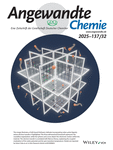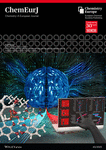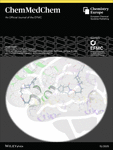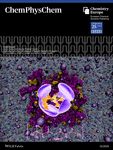Journal list menu
For full article and contact information, see Angew. Chem. Int. Ed. 1998, 37 (17), 2349 - 2354
Right without Left
A process developed in Groningen simplifies the purification
of raw materials for pharmaceuticals
Many chemical compounds - including most pharmaceuticals - occur in two variant forms which are mirror images of each other, like a right and left hand. Both variants are produced in conventional chemical reactions, but only one of the two is usually desired. Ton Vries, working with Hans Wynberg, director of Syncom BV, a privately owned research company located in Groningen, The Netherlands, has found a new, elegant way of separating the two forms with less effort than has been previously required.
Since the thalidomide catastrophe, which was caused by the harmful effects of one of the two variants of the thalidomide drug, industrial and research chemists have gone to great lengths - at high cost - to ensure either that only the one mirror-variant of their target product is formed in their reactors, or that its mirror-image is efficiently removed at a later stage of the production process. Every year tonnes of the analgesic drug Naproxen® and the antibiotic raw material phenylglycine are separated into their 'left' and 'right' forms, to name but two examples.
What Louis Pasteur - the discoverer of chemical "handedness" - could manage in his day with a magnifying glass and tweezers, today - exactly 150 years after his discovery - requires a great deal of chemical skill: chemists add a substance to their right-left mixture which will only react with one of the two forms, just as a right shoe only fits a right foot; these 'pairs' can then be further processed to give the desired single variant. Up to now, tedious research was needed to find suitable additives.
This is where the new method developed by Vries and Wynberg comes into play: Vries added a whole series of reagents to their mixtures at once, in the hope that the target product would seek out a shoe to fit itself. Their hope proved to be more than justified: in most cases the pharmaceuticals combine simultaneously with several of the reagents. The resulting crystals then need only be filtered off from the solution. When Wynberg and his colleagues subsequently remove the reagents, only the desired left- or right-handed pharmaceutical remains - in a purity only achievable before in a procedure involving several steps.
And the cause of this unexpected effect? The technique works because the pharmaceutical molecules become stored in the crystals of the reagent as they pair up. Plainly the pharmaceutical molecules formed from the mixtures have picked out the additives that best suit their shape, somewhat like made-to-measure rather than off-the-peg clothing. The Syncom chemists will now further develop the new process together with scientists from DSM-Andeno of Geleen, The Netherlands, who found it important enough to acquire the patent rights.






































